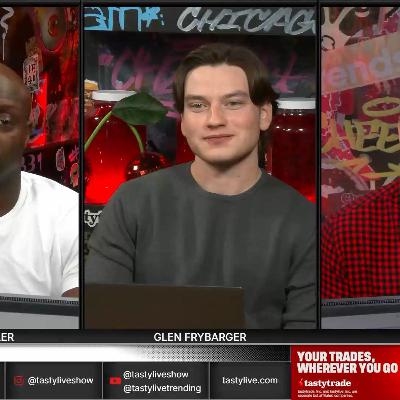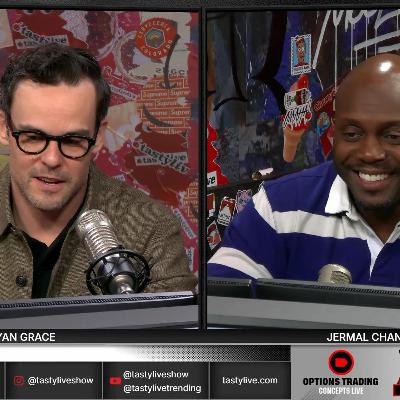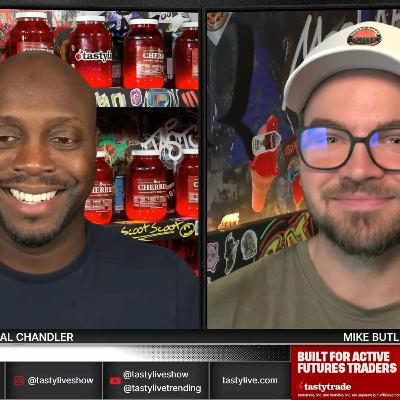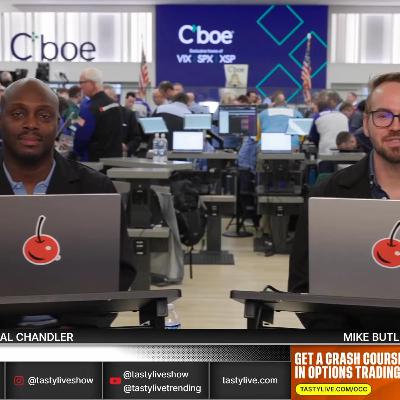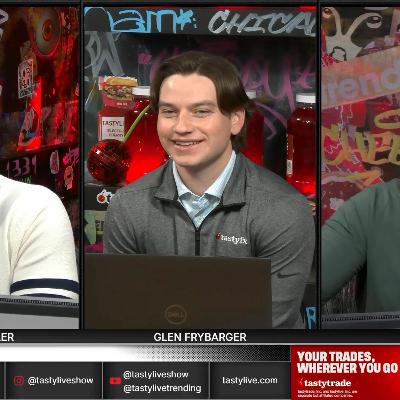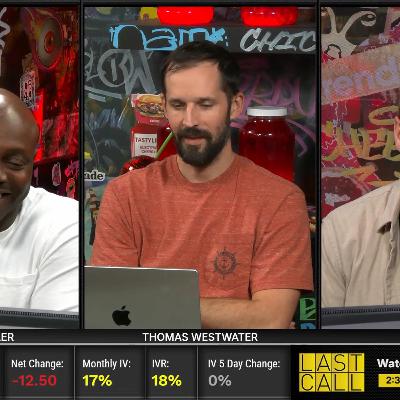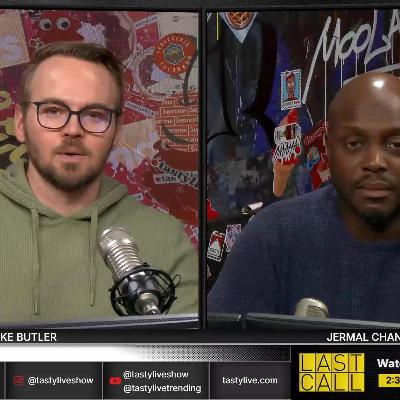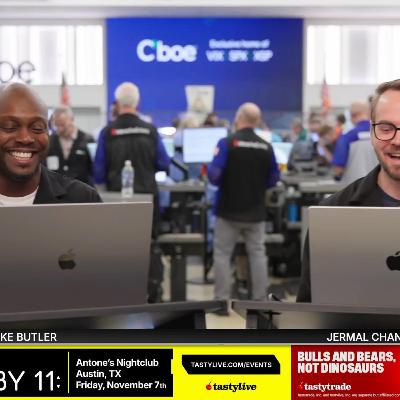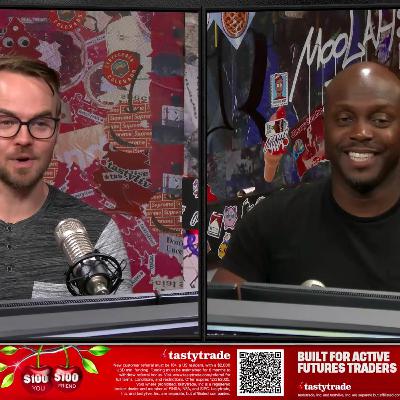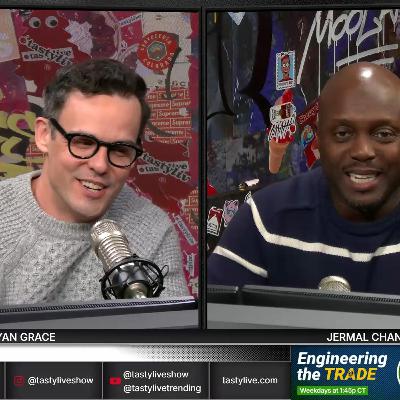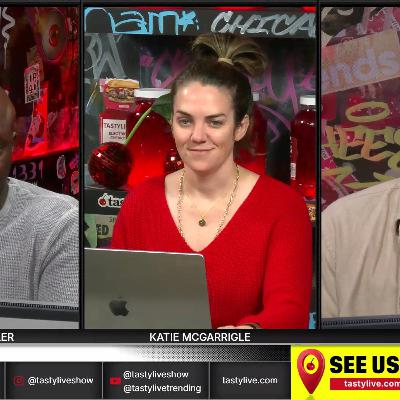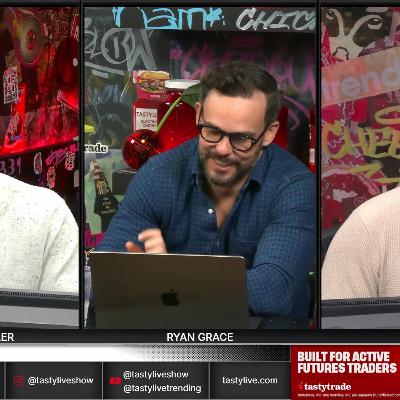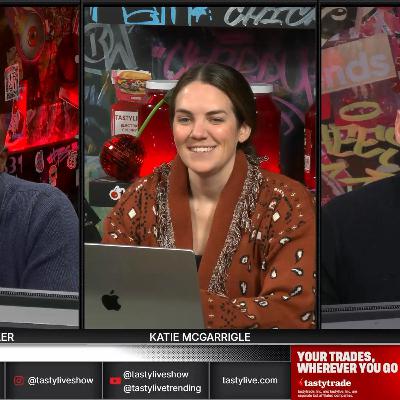Discover tastylive: Last Call
tastylive: Last Call

2232 Episodes
Reverse
Major indices faced steep declines Thursday, with the S&P 500 down over 80 handles and NASDAQ dropping 450 points. Disney (DIS) plunged nearly 10% following earnings, while NVIDIA (NVDA) fell 4% ahead of next week's earnings report. Hosts Mike and Jermal discussed several trading strategies amid the volatility, including SPX iron condors and directional trades to capitalize on market movement. They noted VIX futures rose 2.8% while natural gas continued its upward trend with a 2.25% gain. The traders examined several trade ideas including a December 31st SPX iron condor, a November 28th bull put credit spread paired with a long call spread, and downside strategies in EEM and AMAT heading into earnings. They emphasized the importance of proper position sizing and understanding the differences between trading ETFs versus individual stocks when managing risk in volatile markets.
In today's broadcast, the team at tastylive discussed the muted volatility in FX markets, particularly the Euro (EUR/USD), which is testing key support levels around 1.16, and the dollar's behavior, with anticipation building for upcoming data volatility as the U.S. government reopens. They highlighted the potential for a Federal Reserve rate cut in December, expressing mixed market sentiment with some pairs like the Australian dollar remaining stable while others showed divergence. Options strategies, like diagonal spreads, were also explored, emphasizing the importance of sizing in trading.
In today's Options Trading Concepts Live, Mike, Jermal and Thomas Westwater analyzed copper's potential for a major upside move in 2026, noting that the copper-gold ratio has reached extreme lows not seen since the COVID recession. The International Copper Study Group forecasts a deficit of 150,000 tons by 2026, a significant shift from earlier surplus predictions. Supply constraints from major miners like Anglo-American and Freeport, combined with rising demand from electrification and AI data centers, create bullish conditions. When the copper-gold ratio reaches current levels, copper historically outperforms gold by nearly 20% over the following 60 days. The hosts established bullish positions with HG calendar spreads and gold call diagonals. Other markets discussed included natural gas's seasonal strength (up 4.5% today), livestock's volatile trading patterns, and Micron's challenging options environment amid semiconductor volatility.
Traders Mike and Jermal discuss a strong market rebound as the S&P 500 futures turned positive, erasing Friday's losses amid increased probability of the government shutdown ending soon. The rally, which saw the E-mini S&P futures up 65 points and NASDAQ futures up nearly 400 points, was particularly strong in semiconductor stocks including AMD, Micron and NVIDIA (NVDA). The hosts closed multiple bullish positions to reduce risk after the significant reversal, with Mike noting he typically discounts probability calculations after a 200-point S&P reversal and instead focuses on risk management by taking profits. Despite the rally, uncertainty remains regarding the Fed's November decision, with a 60% probability of a 25-basis point cut versus a 40% chance of rates staying unchanged - a significant shift from a month ago when staying unchanged had only an 8% probability. The traders discussed position management strategies including calendar spreads and triangle/strangle techniques for ongoing market exposure while managing delta risk.
Mike & Jermal head to the CBOE SPX pit and discuss a few SPX options trades. Mike serves up his standard 0DTE iron condor in SPX, along with a short put that finances the cost of a long call spread. Jermal sells a call in HOOD. Tune in to learn more!
In this episode of Options Trading Concepts Live, the team discusses key earnings reports impacting major tech stocks like Meta (META), Google (GOOGL), and Microsoft (MSFT). They analyze Amazon's (AMZN) upcoming earnings, considering a diagonal call strategy to leverage its revenue potential. Jermal shares an options play on Fiserv (FI) expecting a bounce-back post-earnings. Other trade ideas include a synthetic play in crude oil and a diagonal spread on Boeing (BA). The team emphasizes managing risk and monitoring implied volatility as earnings season unfolds.
Ryan Grace from tastycrypto outlined the concept of liquidity pools on decentralized exchanges like Uniswap. These pools allow users to deposit token pairs (such as ETH and USDC) and earn fees from facilitating trades, similar to market making. By providing liquidity within a specified price range, users can generate significant yields - often 30-50% annualized or higher during volatile periods. The strategy resembles options strategies like covered calls and short puts, with narrower ranges providing higher yields but increased risk of going "out of range." With blockchain technology improvements, transaction costs have plummeted from hundreds of dollars to pennies, making liquidity provision accessible to smaller investors. Ryan highlighted how this represents a potential future where tokenized assets could bypass traditional market intermediaries. Meanwhile, crypto markets showed strength with Bitcoin up 4% and Ethereum up 6.5%, maintaining strong correlation with equity markets amid the broader risk-asset rally.
TP and Jermal Chandler analyzed three trending market sectors: rare earth minerals, nuclear energy, and quantum computing. They examined potential options trades in stocks like MP Materials, Cameco (CCJ), and Oklo (OKLO).
TP demonstrated a unique calculation comparing theta to buying power effect when evaluating trades. This ratio helps determine whether to use naked puts or put spreads based on account size. For MP, with 94% implied volatility, a short put offered significant positive theta relative to capital requirements.
Both TP and Jermal noted bullish skews in these high-volatility stocks, suggesting market sentiment leans positive despite recent pullbacks. They recommended working limit orders between bid-ask spreads to avoid slippage, especially in less liquid names.
China dominates rare earth mineral reserves with 44 metric tons, while France leads in nuclear energy production. The quantum computing market is projected to grow substantially despite skepticism about near-term viability.
Markets showed contrasting reactions to major earnings reports, with Tesla recovering from an initial post-earnings drop to trade at $434, up from lows of $413. The projected 30-point move materialized as just 4 points, creating a significant volatility crush across option chains. Meanwhile, Netflix continued sliding following its earnings report, dropping from $1250 to below $1150 despite mentions of successful content like "K-pop Demon Hunters." Management cited Brazilian tax issues affecting results. The broader market showed strength with oil surging 6% to $62, while gold and silver gained over 2%. Volatility metrics remain key, with contango suggesting potential upside despite occasional selloffs. Trade ideas included SPX iron condors exploiting elevated one-day implied volatility, short calls in Quad9 (QD) at the 40 strike for premium collection, and British pound futures exposure through micro contracts.




